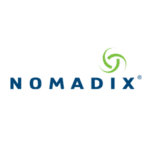Your home page is for your hotel what a movie trailer is for a summer blockbuster. It’s your chance to grab your visitor’s attention and draw them in.

Let’s look at five easy steps to get that done.
First things first
Your home page is so key to your hotel website’s success that you need to decide exactly what you want to showcase about your property (i.e. which scenes you want to put in your movie trailer).
Take your time and think carefully. Start with a brainstorm and create an ideal guest persona. Imagine what they can enjoy and discover at your hotel.
Also keep in mind that the key factor in people visiting your website is because they need or want something. Design your home page ensuring that this need is met, and visitors can quickly access what they’re looking for.
Now, let’s get down to business.
1. Draw attention with a strong headline
Your headline and lead image are the first things people see when they come to your site.
They should showcase your property’s USP (unique selling point) and highlight it in a way that addresses your site visitor’s query, or even better, creates a desire to know more about staying at your property.
Establishing this connection with your audience right away can give you an edge over your competitors.
Add a booking engine above the fold as well. Site visitors who already know they want to stay with you or are curious about your rates will thank you for it.
2. Write for first-time visitors
Presume that every site visitor is there for the first time.
Some may already be familiar with your hotel, but chances are that most people just found you on Google or an OTA and clicked to learn more about you.
Highlight details about your hotel that first-time visitors might want to know; this helps convince them they have come to the right place.
- Present your room categories and their specs. Include a link to the full room description page.
- Promote your F&B offering. Use a slider or columns if you have multiple venues. Add a link to each outlet’s page or your dedicated F&B page.
- Feature other facilities like meeting rooms, ballrooms, your spa or pool. Show them what you’ve got and include links to the relevant information pages where appropriate.
3. Make navigation easy
The easier it is for people to navigate your site, the more likely they are to book direct or get in touch with you.
Make this happen by accommodating the following three stages of the booking process on your home page.
- Research: When people begin their initial research they want to find out what your property has to offer. Think about your target audience when you choose what to mention. Do you have a lot of conference business? Then your meeting facilities should take center stage. If you attract families focus on the child-friendly activities and amenities instead.
- Rate comparison: Before reserving a room, people will compare your rates with other hotels and across various booking channels. Make it simple to check and understand your rates and packages. If this part is too complicated, you risk potential customers being snapped up by OTAs or even your competition.
- Booking a room: Make sure your booking engine runs smoothly and allows guests to book quickly and easily. Again, if there are too many obstacles, you risk losing customers.
Remember: Keep your website simple. Feature key information on your home page and link to supporting pages that provide more details.
4. Build trust
Trust is key in getting someone to book direct after visiting your site for the first time. A professional looking website is the first step.
Here are a few more steps you can take:
- Spotlight guest reviews to show how much others enjoyed their stay.
- Mention awards you’ve received or industry associations you’re a part of.
- Offer a best rate guarantee for guests booking directly on your website.
- Clarify all inclusions and conditions to avoid irritating customers with hidden costs or restrictive policies.
- Provide contact information and think about adding a live chat to increase engagement.
5. Encourage action
You’ve introduced your hotel, provided relevant information and built trust; now you want to inspire action!
Here are three things you can encourage:
- Booking a room: Use a strong call to action to encourage site visitors to book direct. Consider offering a direct booking bonus like an F&B voucher or free parking to increase conversions.
- Getting in touch: Offer a live chat on your site so your team can immediately answer questions about your property, promotions, etc. Once a potential guest gets in touch, they are much more likely to take the final step.
- Signing up for your mailing list: Add a sign-up box for your newsletter and include an interesting lead magnet. If somebody joins your mailing list, they’re more interested in your hotel than the average site visitor. Even if they don’t book right away, there’s a good chance they’ll stay with you in the future.
Now that you know the five steps to make your hotel home page awesome, it’s your turn! Which action item will you apply first?
About the Author

Juliana Hahn is a content creator and copywriter specialized in writing for the hospitality and tourism industry. Before diving into the world of copywriting several years ago, she studied hotel management and worked in hotels around the globe. Today she leverages her industry experience to craft engaging content for hospitality tech companies, hotels and online publications. You can find her at www.hospitality-copywriting.com















